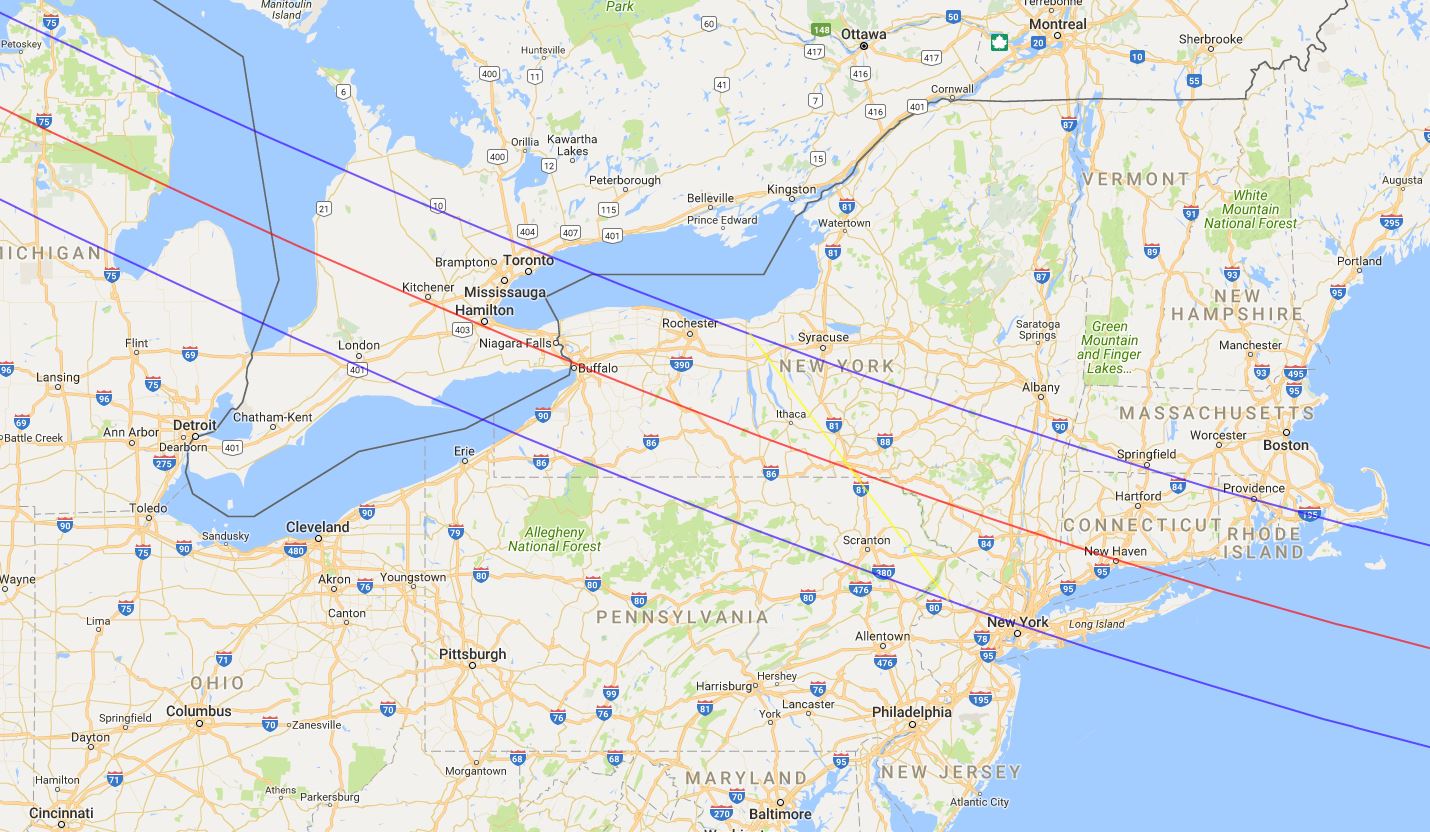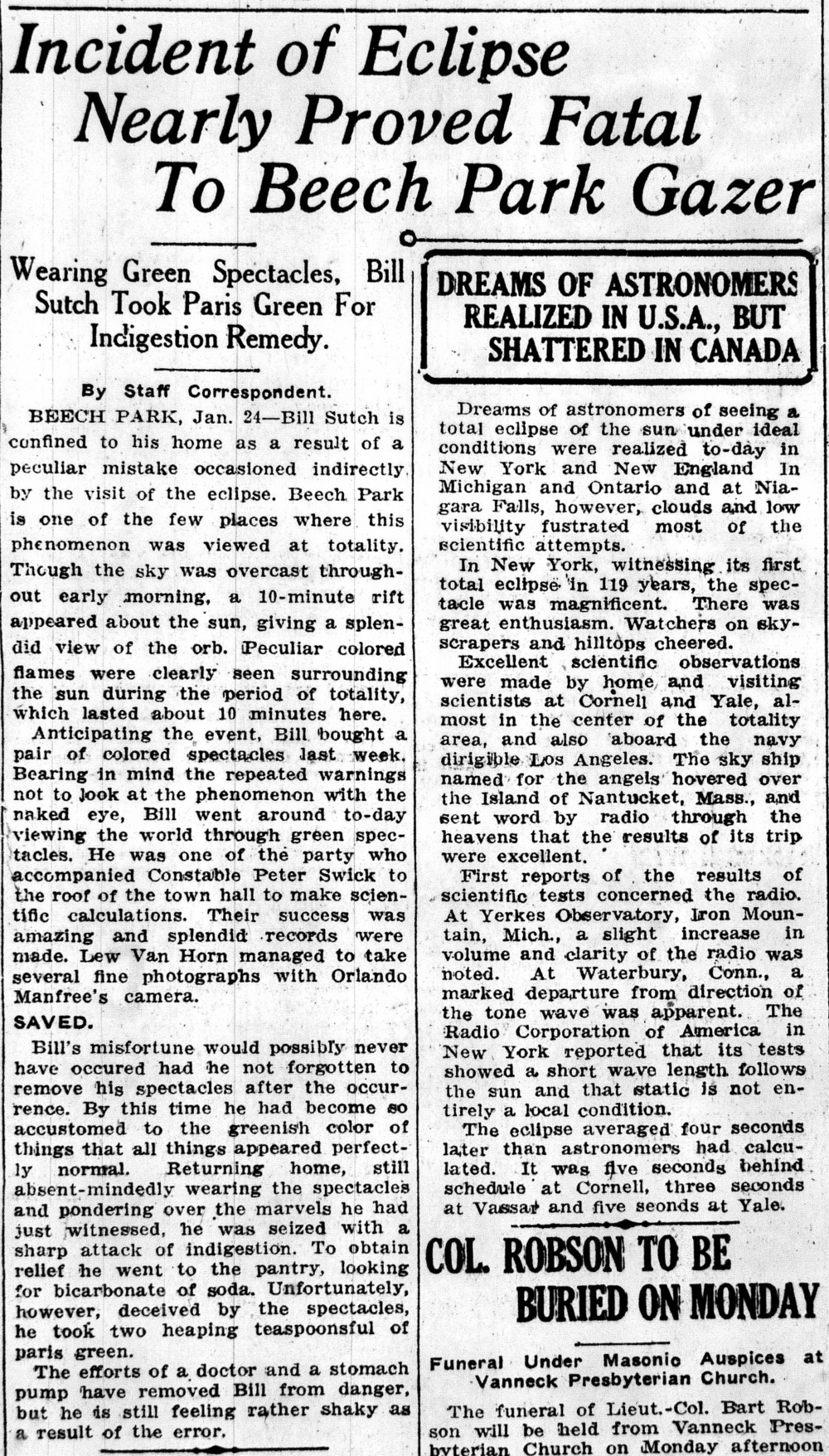It’s always interesting to see how eclipses were enjoyed and interpreted by humanity in former times. In that spirit, here are some connections brought to you by the magic of the internet. The following newspaper clippings are from the London Free Press and the London Advertiser, the day of and the days after a total eclipse of the Sun occurred in London, Ontario, on 1925-01-24.
You can click on the images to enlarge them, then use the back button on your browser to return to this page.
This is the path of the eclipse across Ontario and the northeastern U.S.A. As you can see, London was near the southern edge of the eclipse path. Totality lasted just 49sec, at 09:05 in the morning.

Nice to know that there was much interest among the public about the eclipse, then as now.

Here’s a wide scan of the front page of the evening newspaper that cold and cloudy day.

This clipping gives some idea of how popular the event was. A rooftop makes a great location to observe an eclipse.

More about folks standing rooftops.

Perhaps the happiest news that day is in this report, which includes two photographs of the eclipse, proving that not everyone in London had to suffer a completely overcast sky.

Eclipse photography has always been a difficult project. Newspapers had a lot of experience with quickly getting a picture, having the film developed in a darkroom, and publishing the picture in the very next edition. But it was never easy! So imagine the frenzy of activity required to get these photos into the evening edition, barely a quarter of day after totality that morning. The caption below these photos explains when they were taken, just after totality, and tells the bad news that totality itself was blotted out by a cloudbank.

Here’s a summary of three projects to photograph the total solar eclipse from the air. Only one succeeded, but they couldn’t get the film to the lab and back to the printer’s before the evening edition of the newspaper had to be finalized.

Meanwhile, on the ground was Professor H.R. Kingston, founder of RASC London Centre, who was a math teacher and astronomer from Western University. But he missed “one of the supremely important things in his professional life” because of the clouds that morning.

One of the few reports of a successful eclipse observation in the London area in 1925 almost had a tragic ending. “Paris Green” is a chemical that was used to treat wood to protect it against pests. It contained arsenic!
If you wear safe viewing protection to look at the Sun, it’s equally important to remove your viewer when you turn away from the Sun!

In this newspaper report, it is mentioned that the most recent total eclipse in London before 1925 was 1806. But the eclipse on 1806-06-16 missed London by a short drive. In fact, the two total eclipses before 1925 in London were on 1451-06-28 and 1142-08-22. This report was before the time of electronic computers, of course, so it’s easy to forgive them for not knowing the exact details of the path of totality for the 1806 event — those are very difficult calculations to do. The future event referred to in the article will take place on 2144-10-26 and that is, indeed, the next total eclipse visible from London. However, it’s interesting that the article didn’t mention the soon-upcoming total eclipse on 2024-04-08, which will miss London by only about the same short drive as the one in 1806.

Here’s how the newspaper reported on successful observations in the eastern U.S.A.

Originally posted by Peter Jedicke on his site peter.jedicke.ca

